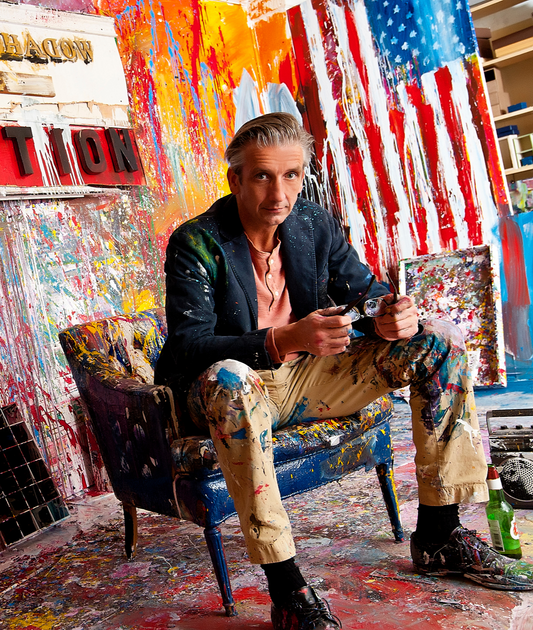In the wildly complex realm of modern art, two movements stand out for their stark contrasts and revolutionary approaches: Pop Art and Minimalism. While Pop Art is known for its deep use of color and cultural commentary, Minimalism focuses on simplicity and the reduction of form.
In 2025, this conversation becomes more and more interesting to discuss, and we’ll explore these two movements and their significance, with a spotlight on Steve Penley, a contemporary artist whose work bridges the gap between Pop Art and modern cultural expression.
For similar art debates, go and check out our recent discussions on pop art vs various similar, sometimes different forms of art: pop art vs op art, as well as pop art vs contemporary art, the classic pop art vs abstract expressionism, and our latest debate on pop art vs surrealism art.
Pop Art: The Art of Everyday Culture
Pop Art emerged in the 1950s as a reaction to the increasing consumerism and mass media culture. Artists like Andy Warhol, Roy Lichtenstein, and Richard Hamilton sought to elevate everyday objects and advertisements into high art, using bold colors, recognizable imagery, and a sense of irony. The movement embraced consumer culture, celebrity, and media, turning the mundane into the extraordinary.
One of the key figures in contemporary Pop Art is Steve Penley, whose vibrant portraits of iconic figures like George Washington and Abraham Lincoln continue the tradition of celebrating American culture. His use of bright colors and larger-than-life brushstrokes aligns with the Pop Art ethos, making historical figures resonate in the context of modern pop culture. You can explore more of Steve Penley's work on Penley Art Co..
Minimalism: The Power of Less
Minimalism, on the other hand, is a movement that rejects excess and emphasizes simplicity. Emerging in the 1960s, Minimalism sought to strip away unnecessary elements, focusing on clean lines, geometric shapes, and a limited color palette. Artists like Donald Judd, Frank Stella, and Ellsworth Kelly embraced these principles, creating works that challenged traditional notions of art and its relationship to space.
The minimalist aesthetic is defined by its reduction of form, with works that often appear stark and devoid of emotion. While Pop Art fills the canvas with vibrant colors and commentary, Minimalism leaves the viewer to contemplate the essence of form and space. The movement challenges us to find beauty in simplicity, where every element serves a precise purpose.
Pop Art vs Minimalism: The Key Differences
At first glance, Pop Art and Minimalism couldn’t be more different. Pop Art is loud, colorful, and full of cultural references, often using commercial imagery to make a statement about consumerism and media. In contrast, Minimalism is quiet, with its simple shapes and muted colors focusing on the relationship between the artwork and the space around it. While Pop Art celebrates abundance, Minimalism embraces the beauty of reduction.
The contrast between the two movements lies in their approach to emotion. Pop Art is often playful, ironic, and exuberant, drawing from the energy of popular culture. Minimalism, however, evokes a sense of calm, emphasizing form and space rather than narrative or expression.
Steve Penley: A Modern Fusion of Pop and Minimalism
While Steve Penley’s work clearly draws from the Pop Art tradition, it also reflects elements that resonate with the minimalist emphasis on simplicity and focus. His portraits, with their clean lines and bold color choices, bring a sense of order and structure that echoes Minimalism’s aesthetic, while still embracing the cultural vibrancy of Pop Art.
Penley’s approach shows how contemporary artists can blend influences from both movements, creating works that speak to the complexity of modern culture. His iconic portraits are simple yet dynamic, a perfect fusion of the boldness of Pop Art and the clarity of Minimalism.
The Final Call on Where Pop Art Meets Minimalism Art...in 2025 and Beyond:
Both Pop Art and Minimalism have left an indelible mark on the art world. While Pop Art celebrates mass culture and the vibrancy of everyday life, Minimalism challenges us to consider the beauty in simplicity and the relationship between the viewer and the artwork. Artists like Steve Penley show how these movements can coexist and inform one another, creating a modern dialogue between color, culture, and form.

